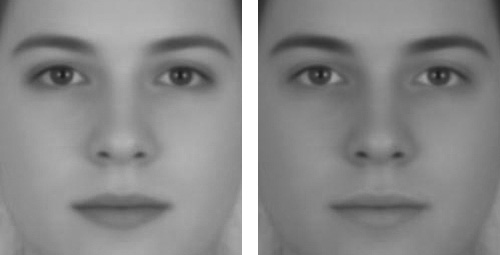The Loch Ness Aftereffect
Fixate the red point you will see in the center while paying attention to the rotating ring of gray lines
Most observers perceive that the ring of lines rotates slowly, with brief jumps of much faster rotation in the opposite direction. The very fast jumps are illusory. The illusion usually gets stronger after one or two jumps, and seems to be enhanced by paying close attention to the lines in the ring.
The most famous illusion of movement is the motion aftereffect: look at uniform motion for a while, and things will seem to move the other way. It was discovered a long time ago by staring at a waterfall in Scotland, and, though important, is a bit boring: the illusory motion is slower than the real movement that induces it. As it turns out, the Scottish waterfall actually feeds… Loch Ness, and that just under the placid surface of the motion aftereffect lurks a true monster, capable of producing illusory motion a hundred times faster than the inducing movement.
The illusion of sex

In the Illusion of Sex, two faces are perceived as male and female. However, both faces are actually versions of the same androgynous face. One face was created by increasing the contrast of the androgynous face, while the other face was created by decreasing the contrast. The face with more contrast is perceived as female, while the face with less contrast is perceived as male. The Illusion of Sex demonstrates that contrast is an important cue for perceiving the sex of a face, with greater contrast appearing feminine, and lesser contrast appearing masculine.
Russell, R. (2009) A sex difference in facial pigmentation and its exaggeration by cosmetics. Perception, (38)1211-1219.
Rolling Eyes on a Hollow Mask
The well-known hollow-mask illusion: hollow masks appear as normal faces that “follow” viewers who move in front of them. Also, when a hollow mask rotates on a turntable, it appears to turn opposite to the actual direction of the turntable.
An interesting variant: If we add 3-D objects to the mask (e.g., a cigarette) or attach 3-D eyeballs on the whites of the eyes, what will the percept be when we turn the mask? Answer: The result is a compelling illusion in its own right; these objects appear to rotate in the opposite direction to that of the mask.
See a longer version of the video
Read more about the illusion and possible explanations
Where Has All the Motion Gone?
Click on the big button to toggle between a blurred version of the display and an unblurred version. When the display is blurred, the motion is dramatic; when the display is not blurred, there is only minimal motion. The effect can also be seen with a defocused lens. Blur eliminates high-spatial frequencies. It does not add information to the image. Why, therefore, does the removal of high-spatial frequencies add motion to the display? The buttons and levers allow control over the many of the parameters in the display.
Read more about the illusion and possible explanations
The Bar-Cross-Ellipse Illusion
Here we present a new multistable stimulus generated by continuously rotating an ellipse behind four fixed occluders. Observers can perceive one of four percepts: (1) a continuously morphing cross, (2) two independent perpendicular bars oscillating in depth, (3) a rigidly rotating ellipse observed behind the occluders, or (4) a fixed cross observed through a continuously rotating, elliptical aperture.
The bar – cross – ellipse illusion: Alternating percepts of rigid and nonrigid motion based on contour ownership and trackable feature assignment Gideon P. Caplovitz & Peter U. Tse Perception. 2006. 35:993-7
Elusive Arch

Shading is a powerful way to represent the relief of 3-dimensional objects in pictures. However, the way our vision interprets shaded images depends on the shape of their contours. Here two different contours of the same shading pattern convey two different reliefs, joined into an impossible object.
Read more about the illusion and possible explanations
